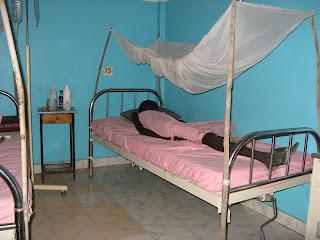Besides refugees and internally displaced people, the populations most at risk for HIV infection include sex workers, soldiers, truck drivers, and women and girls generally. Commercial sex work is common in many parts of South Sudan, especially in urban areas. Many of the prostitutes are from neighboring countries, but the ones who are Sudanese are mostly very young girls who have little knowledge of HIV and are unlikely to use condoms. Condoms are not available in many parts of the country in any case, and are often unaffordable.
Knowledge and awareness of HIV is very low in South Sudan generally, with many people never having heard of the disease and most unaware of steps that can be taken to prevent the spread of it. In Sudanese culture, contracting a disease is often blamed on witchcraft or superstition. The spread of HIV is also aided by the practices of polygamy and widow inheritance: if a polygamous man contracts HIV, infects his wives and subsequently passes away, his widows will then be inherited by other polygamous men who will in turn contract the virus and spread it to their other wives.
HIV is also passed from mothers to their babies. Without intervention, an infected mother will pass the virus to her baby 24-45% of the time. Many women in South Sudan don’t know that HIV can be passed from mother to child, and few of them are able to give birth in a facility equipped to do HIV testing.
A particularly deadly obstacle to the treatment and prevention of HIV is the characteristic of the disease that once infected, individuals generally appear to be healthy for some time afterward. They may remain apparently well for 8 or 10 years, and during this time infect many other people. Because of this, many healthcare facilities in Sudan have begun testing all incoming patients for HIV, regardless of the reason they come in for treatment. Early detection of the disease is key to preventing its spread.
Pictured below is a patient at the Mary Immaculate Hospital in Mapuordit, who is dying of AIDS. This is one institution that tests all patients for HIV, and about 5% currently test positive. Many of the affected individuals identified refuse treatment however, presumably because they don’t understand what the consequences of this choice are.

No comments:
Post a Comment